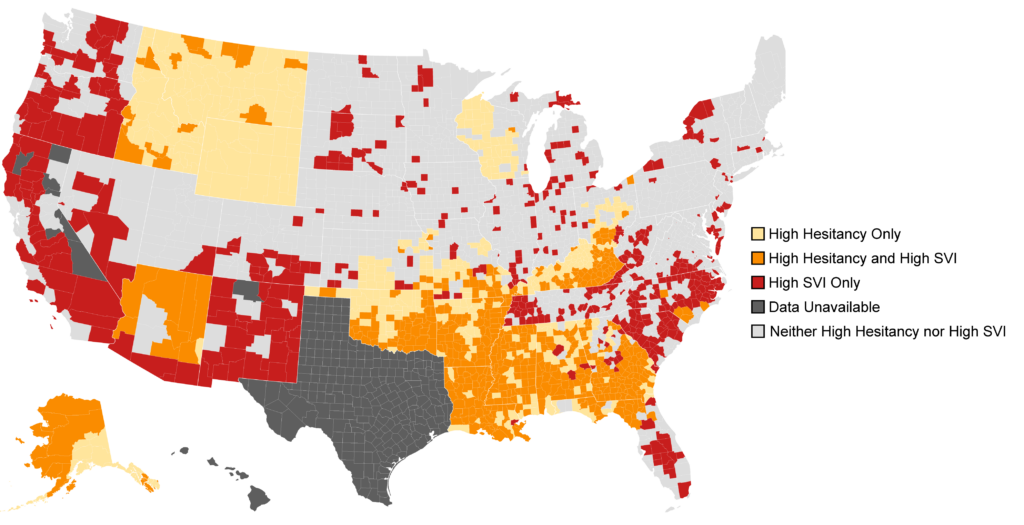Abstract
We analyzed trends in adult COVID-19 vaccine coverage over time based on COVID-19 vaccine hesitancy and social vulnerability. We found that each of these variables carries an independent association with disparities across counties in COVID-19 vaccine coverage. Counties that score high on both hesitancy and vulnerability are especially likely to have lower COVID-19 vaccination rates compared with the rest of the country.
Despite some uptick in recent weeks, vaccination rates for protection against COVID-19 in the US continue to fall short, threatening the country’s ability to control transmission and avoid outbreaks. The growing predominance of the B.1.617.2 (Delta) variant of SARS-CoV-2 in the US presents challenges, with increased transmissibility pointing to the need for greater adoption of COVID-19 vaccines. Structural disadvantage and vaccine hesitancy reduce COVID-19 vaccination rates, and both continue to be targets for policy intervention. The relative importance of these factors, and whether or where they may intersect, are relevant to policy but not well understood.
We explored the impact of social vulnerability and vaccine hesitancy in data recently made available by the Centers for Disease Control and Prevention (CDC) that describe county-level trends in COVID-19 vaccination. We found that both hesitancy and social vulnerability have independent negative associations with COVID-19 vaccine coverage. Over time, hesitancy became a stronger predictor of the differences between counties, but social vulnerability continued to be a factor—and increasingly important in magnitude. When we considered these together, counties with high hesitancy and vulnerability were and continue to be most at risk of failing to attain high COVID-19 vaccine coverage.
A press release for this study can be found here. This study was published in Health Affairs.
